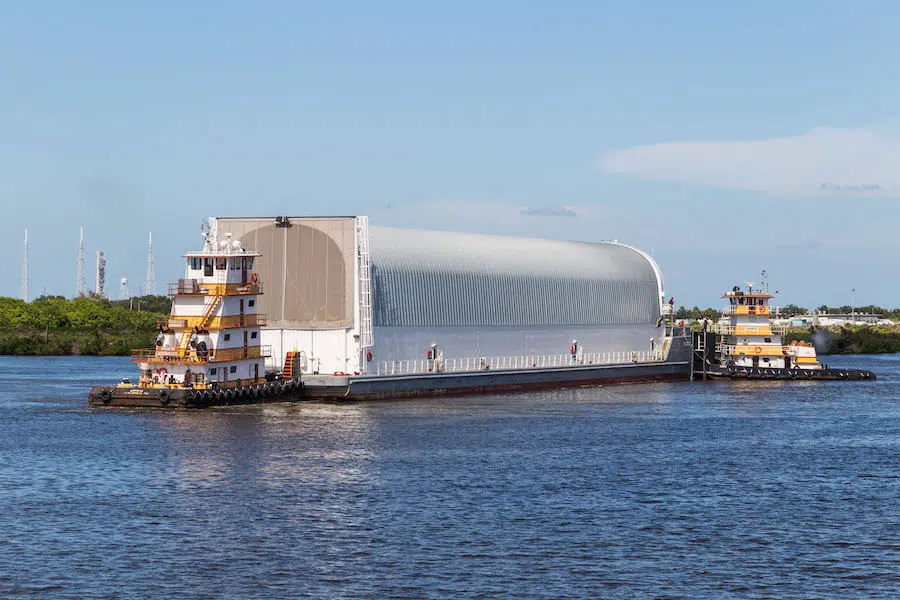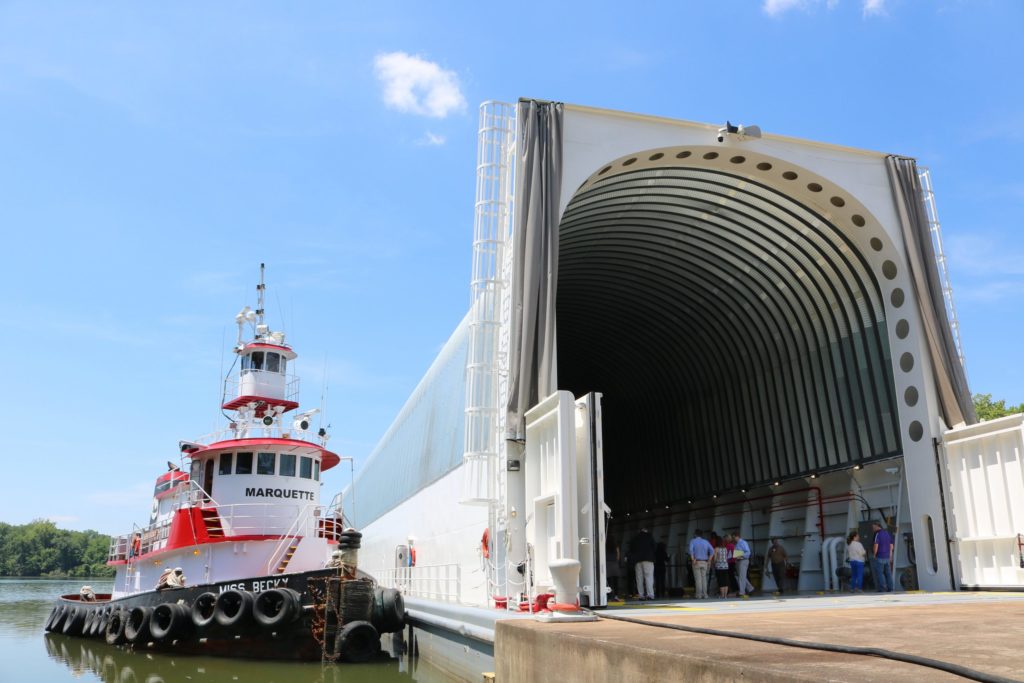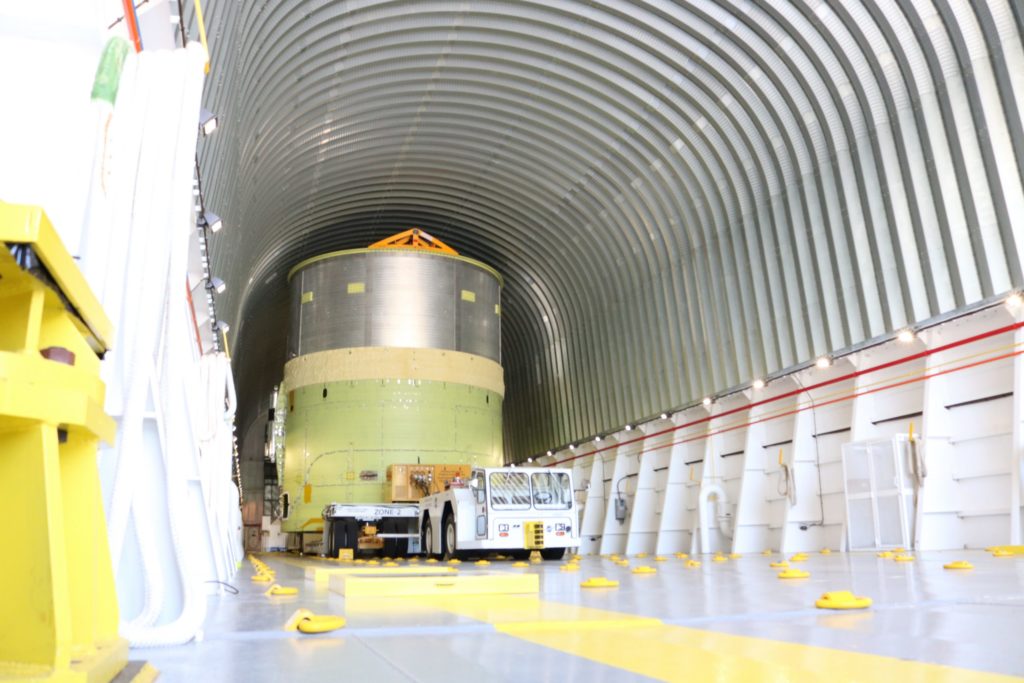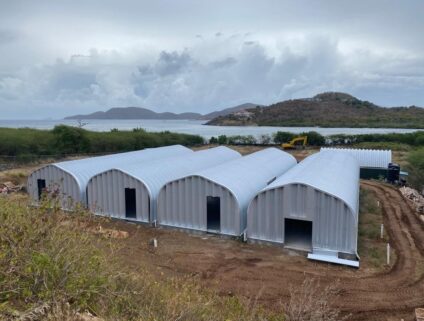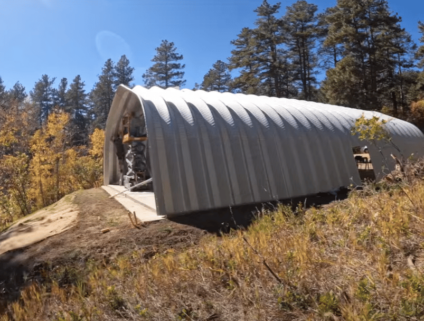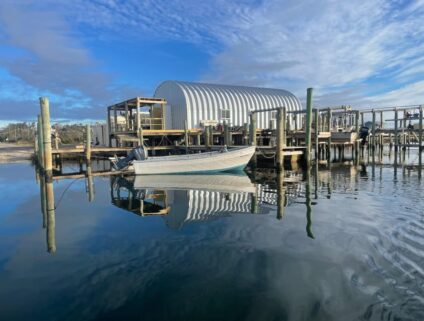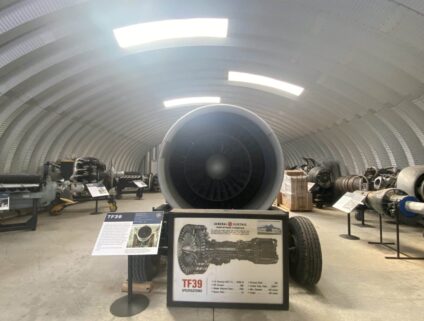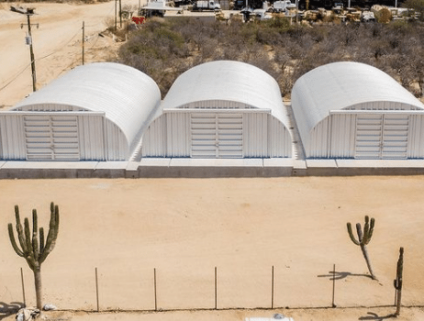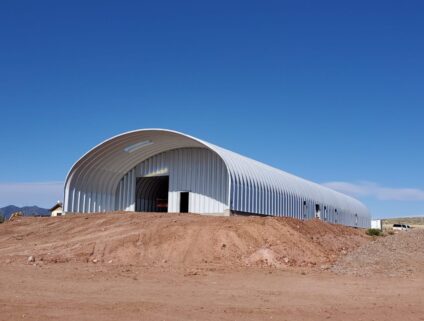NASA Uses Quonset Hut to Transport World’s Largest Rocket Stage
NASA’s Pegasus barge is used to ferry the agency’s largest rocket stage in the world, the Space Launch System (SLS), from the Michoud Assembly Facility in New Orleans to other NASA centers for testing and launches.
A massive, 50′ x 310′ SteelMaster S-Model Quonset hut covers the barge to protect the SLS during transport
Pegasus was designed and built in 1999 to transport the massive tanks of the space shuttles from the Louisiana shore to NASA’s Kennedy Space Center in Florida—900 mile journey! It replaced Poseidon and Orion, barges used to carry Saturn rocket stages and hardware for the Apollo Program.
Surprisingly, there are no engines on Pegasus. This is because tugboats or towing vessels are required to move the barge.
In 2011, Pegasus finished its final space shuttle related voyage and is now housed at NASA’s Stennis Space Center in Mississippi.
In 2014, Pegasus had to be modified and refurbished since the SLS launch system is over 50 feet taller than the space shuttle tanks and more than 600,000 pounds heavier due to additional equipment.
A 115 foot section of the barge was removed and replaced with a 165 foot section to increase the cargo weight. The barge was also lengthened from 260 feet to 310 feet, longer than a football field.
Now, there’s 240 feet worth of usable cargo deck length and 36 feet usable cargo deck width. Modifications were complete in 2015.
The first voyages for the refurbished Pegasus carried core stage structural test articles from Michoud to NASA’s Marshall Space Flight Center in Huntsville, Alabama. Once at Marshall, the elements of the core stage underwent structural loads testing to make sure each piece of hardware can endure launch loads.
The first core rocket stage for NASA’s Artemis program was loaded on the Pegasus barge on January 8, 2020 for delivery to NASA’s Stennis Space Center.
The core stage will provide more than 2 million pounds of thrust to help power the first Artemis mission to the Moon. It will be then be shipped to NASA’s Stennis Space Center near Bay St. Louis, Mississippi, for the core stage Green Run test series.
After Green Run, the barge will carry the core stage flight hardware to Kennedy Space Center in Florida for launch preparations.
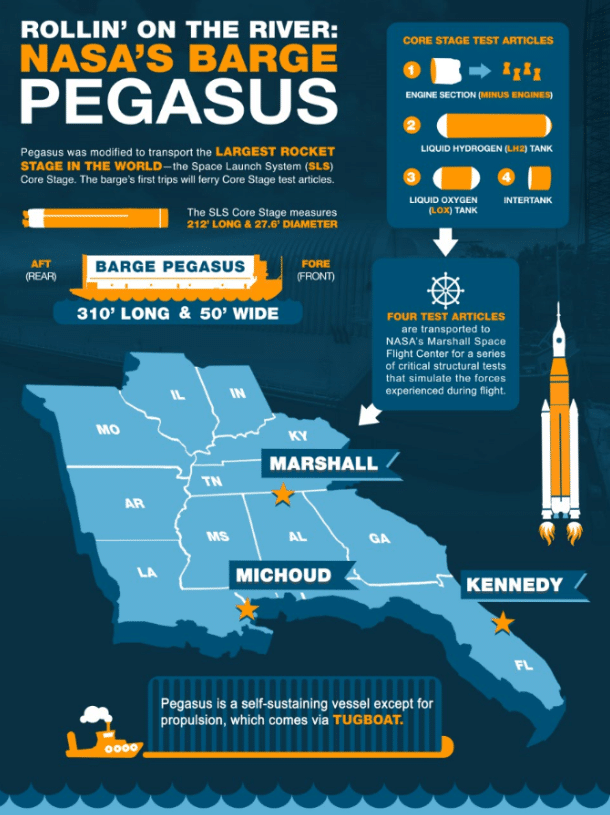
Categories

